White gold and platinum, two names that often cause confusion due to their similar appearance and their common use in high-end jewelry. However, beyond this “twin” exterior lie fundamental differences in nature, value, color, hardness, and durability. In this article, let’s explore the key distinctions between white gold and platinum to help you make an informed choice when investing in exquisite jewelry pieces.
1 The Origins of White Gold and Platinum
What is White Gold?
White gold is not a naturally occurring metal but an alloy of gold with other metals such as palladium, nickel, and silver. The percentage of gold in white gold typically ranges from 58.5% to 75%, with the remaining composition made up of these other metals. The white color of white gold comes from a rhodium coating, a metal in the platinum group, which enhances its shine and prevents tarnishing.
What is Platinum?
Platinum, or pure platinum, is a rare and precious metal with a natural white-gray color found in alluvial ore deposits. Platinum boasts a high level of purity, typically ranging from 90% to 95%, and is prized for its durability, scratch resistance, and corrosion resistance.
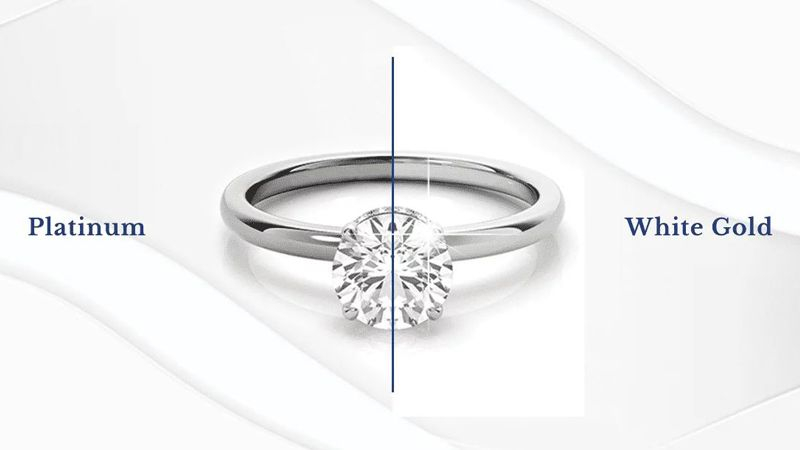 The Origins of White Gold and Platinum
The Origins of White Gold and Platinum
2 Differentiating White Gold and Platinum
Price
The price difference between white gold and platinum is one of the most crucial factors to consider when choosing jewelry. Platinum is generally more expensive than white gold, and this disparity stems from several reasons:
-
Weight: Platinum has a higher specific gravity than 18k gold, by approximately 40%. This means that a platinum piece of jewelry of the same size as a white gold one will be significantly heavier. Since the value of metals is calculated by weight, platinum naturally commands a higher price.
-
Rarity: Platinum is rarer than gold and is found only in limited regions worldwide. This limited supply contributes to its higher value compared to gold.
-
Purity: While white gold jewelry typically has a purity of less than 75% (18k), platinum jewelry requires a minimum of 90% purity to be considered platinum jewelry. This higher standard of purity also contributes to platinum’s higher price tag.
-
Manufacturing Process: Platinum is considered more challenging to work with than gold due to its physical properties. The production of platinum jewelry demands advanced techniques and specialized skills, resulting in higher manufacturing costs that are reflected in the final product’s price.
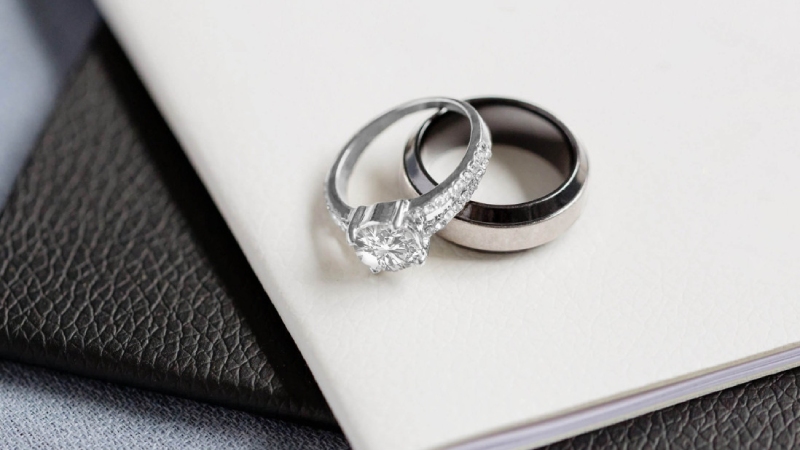 Platinum is usually more expensive than white gold
Platinum is usually more expensive than white gold
Color
White gold and platinum are often mistaken for each other due to their similar appearance, but there are some significant differences to note.
Platinum boasts a natural white color with a shiny finish and a subtle gray hue. This color remains unchanged over time.
White gold, on the other hand, starts as a pale yellow gold but is coated with Rhodium to achieve a white silver color. However, this Rhodium coating can wear off over time, revealing the underlying yellow gold color.
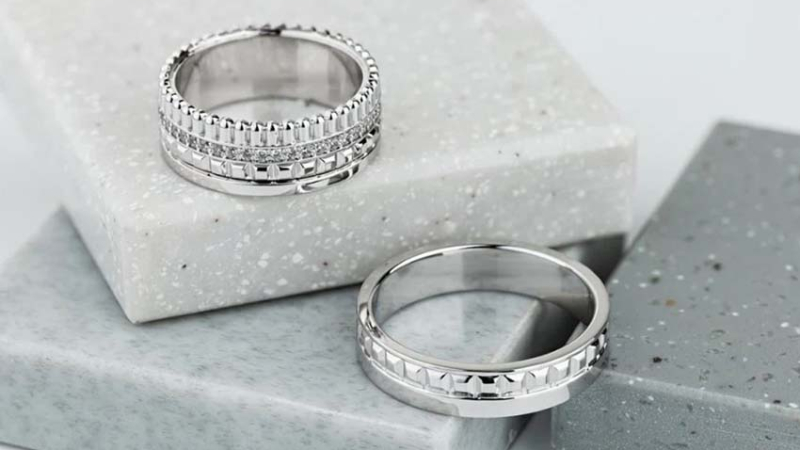 Platinum boasts a natural white color with a subtle gray hue
Platinum boasts a natural white color with a subtle gray hue
Durability
Platinum is renowned as the most rare and durable precious metal in the jewelry industry. It exhibits high resistance to scratching and rusting, maintaining its shiny appearance for the long term.
White gold is softer than platinum and more prone to scratching. Over time, white gold may also tarnish and require re-plating with Rhodium to restore its original appearance.
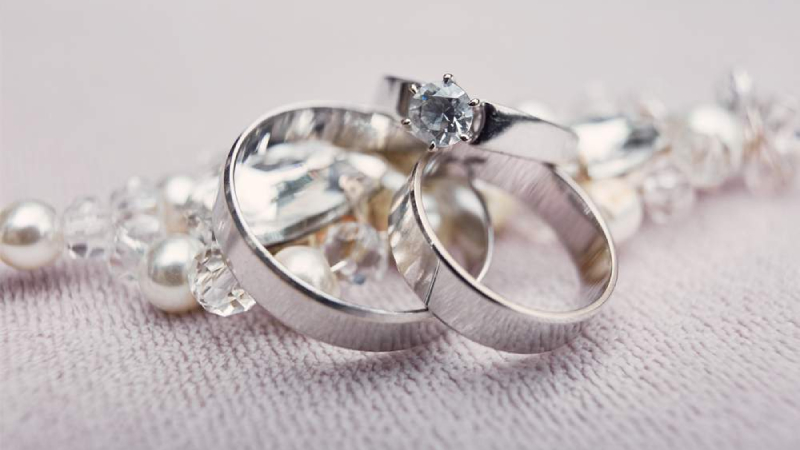 White gold is softer than platinum and more susceptible to scratching
White gold is softer than platinum and more susceptible to scratching
Popularity
Both white gold and platinum are popular choices for jewelry, but each has unique characteristics that appeal to different consumers.
Initially, white gold dominated the market due to its affordability and versatility. However, with its superior durability and aesthetic advantages, platinum is gradually gaining recognition and attracting the attention of connoisseurs.
In the world of diamond rings, platinum is considered a more premium choice than white gold. Platinum’s optimal shine and hardness beautifully accentuate the brilliance of diamonds, while also conveying sophistication and prestige to the wearer.
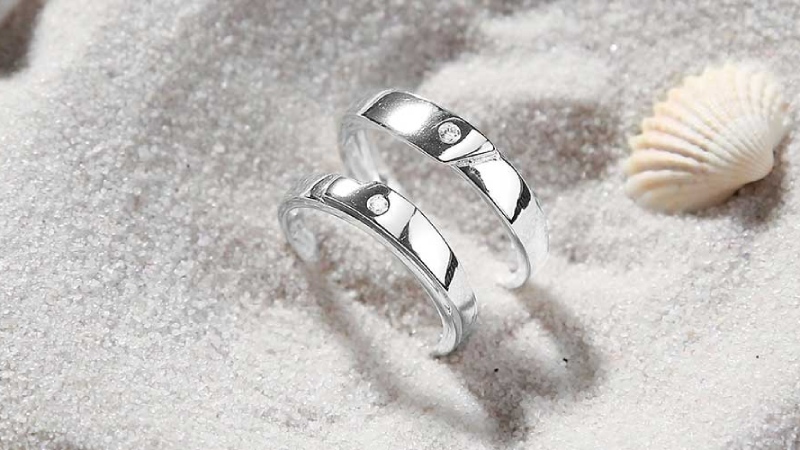 In the realm of diamond rings, platinum is the premium choice
In the realm of diamond rings, platinum is the premium choice
3 Choosing Between White Gold and Platinum Jewelry
The decision to choose white gold or platinum depends on personal preference, budget, and intended use. If you seek bright-colored jewelry that is affordable and easy to maintain, white gold may be the right option. On the other hand, if you prioritize durability, elegance, and resistance to tarnishing, then platinum is the better choice.
 The choice between white gold and platinum depends on personal preference, budget, and intended use
The choice between white gold and platinum depends on personal preference, budget, and intended use
In addition to the differences mentioned above, the choice between white gold and platinum may also depend on jewelry design and individual taste. Carefully consider these factors before making a decision to ensure you acquire the jewelry piece that best suits your needs and preferences.






































